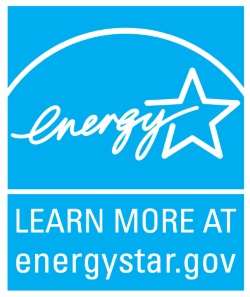Tips for Buying New Household Equipment
On average, you can trace 20 percent of your power bill back to appliances. When you replace them, look for the Energy Star® seal to ensure you get an efficient model.
Use Home Energy Calculators to pinpoint problem spots in your home and see where you should start with replacing your appliances for more energy efficient models.
Energy Star Buyers Guide
Energy Star is the government-backed symbol for energy efficiency, providing simple, credible, and unbiased information that consumers and businesses rely on to make well-informed decisions. Ninety-percent of American households recognize Energy Star, making it one of the most widely recognized consumer symbols in the nation.
Together, since 1992, Energy Star and its partners have helped save American families and businesses more than $450 billion and over 3.5 trillion kilowatt-hours of electricity while also achieving broad emissions reductions — all through voluntary action.
Click here to find certified Energy Star appliances, heating and cooling options, electronics and more.
Heating & Cooling Equipment
Energy Star can help you figure out if it's time to replace your current equipment. Click here for their assessment.
This brochure has a list of questions to ask -- and things to consider -- before purchasing your new HVAC system. By asking the right questions, you will be able to select the HVAC system that best fits your needs.
Understanding the following terms will help you be an educated buyer when looking into new HVAC equipment.
- Heating Seasonal Performance Factor (H.S.P.F.): The H.S.P.F. is the most commonly used measure of a heat pumps heating efficiency. The higher the HSPF, the more efficient the heat pump. In technical term, HSPF represents the total heating output of a heat pump (including supplementary electric heat) during the normal heating season (in Btu) as compared to the total electricity consumed (in watt-hours) during the same period.
- Seasonal Energy Efficiency Ratio (S.E.E.R.): The S.E.E.R. is most commonly used to measure the efficiency of a central air conditioner. The higher the SEER, the more efficient the system. SEER measures how efficiently a cooling system will operate over an entire season. In technical terms, SEER is a measure of the total cooling of a central air conditioner or heat pump (in Btu) during the normal cooling season as compared to the total electric energy input (in watt-hours) consumed during the same period. This measure of efficiency is specific to the temperate climate in the middle of the U.S.
- Energy Efficiency Ratio (E.E.R.): EER is a measure of how efficiently a cooling system will operate when the outdoor temperature is at a specific level (95 degrees F). The higher the EER, the more efficient the system. In technical terms, EER is the steady-state rate of heat energy removal (i.e. cooling capacity) by the product measured in Btu per hour divided by the steady-state rate of energy input to the product measured in watts. This ratio is expressed in BTU per hour/watt.
